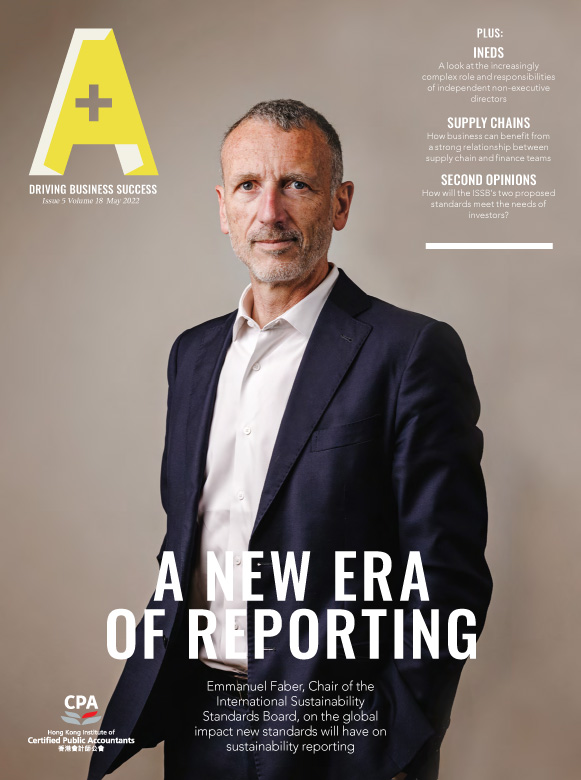Valuation of assets is a frequent issue in audits of financial statements. For example, in assessing impairment of an asset, the auditor would review the asset’s fair value and/or its value in use. In most cases, the auditor obtains the value of an asset from a technical valuation exercise. The following article focuses on determining which procedures should be applied by the auditor to an asset valuation in order to obtain the required audit evidence.
Basic principles
Asset valuations presented in an audit may be performed by management, a valuer engaged by management, or a valuer engaged by the auditor. The auditing standards set out the basic principles for the auditor:
- The auditor shall design and perform audit procedures that are appropriate in the circumstances for the purpose of obtaining sufficient appropriate audit evidence (paragraph 6 of Hong Kong Standard on Auditing (HKSA) 500 Audit Evidence).
- If information to be used as significant audit evidence has been prepared using the work of a management’s expert, the auditor shall evaluate the competence, capabilities and objectivity of that expert, obtain an understanding of the work of that expert, and evaluate the appropriateness of that expert’s work as audit evidence for the relevant assertion (paragraph 8 of HKSA 500).
- The objective of the auditor is to obtain sufficient appropriate audit evidence about whether accounting estimates and related disclosures in the financial statements are reasonable in the context of the applicable financial reporting framework (paragraph 11 of HKSA 540 Auditing Accounting Estimates and Related Disclosures).
- The auditor shall evaluate whether the auditor’s expert has the necessary competence, capabilities and objectivity, and shall also obtain a sufficient understanding of the field of expertise of the auditor’s expert to enable the auditor to determine the nature, scope and objectives of that expert’s work, and to evaluate the adequacy of that work, for the auditor’s purposes (paragraphs 9 and 10 of HKSA 620 Using the Work of an Auditor’s Expert).
- The auditor shall prepare sufficient audit documentation on a timely basis, of the nature, timing, and extent of the audit procedures performed, the results of the audit procedures, the audit evidence obtained, and significant matters arising during the audit, the conclusions reached thereon, and significant professional judgments made in reaching those conclusions (paragraphs 7 to 11 of HKSA 230 Audit Documentation). In addition, documentation requirements in paragraph 39 of HKSA 540 should also be observed.
Audit planning and general issues
A robust audit planning process would identify the level of risk of material misstatement attached to individual assertions pertaining to assets and liabilities in the financial statements, such that the auditor could design and perform appropriate audit procedures to address each risk. Where, for example, the valuation assertion of an asset has a high risk because of its magnitude and the uncertainty involved in determining the amount, the auditor may have to obtain a valuation of the asset by a capable person. The valuation is sometimes done by a member of client management, but more often it is done by a professional valuer engaged by the client. In some circumstances, the auditor may consider it necessary to engage his or her own valuer to do the work.
In assessing a valuation report to determine if it has sufficient appropriate evidence to support the value of an asset, the auditor needs to consider the following general issues:
Valuer’s credentials and objectivity
The valuer should have the appropriate professional qualifications. Furthermore, a specialized asset, e.g. machinery of a gold mine, would call for a valuer having adequate length and depth of valuation experience in the specialized field, and the extent of public recognition of a valuer’s expertise could be useful reference. The valuer should prepare their report objectively, a point that requires the auditor’s particular attention when the valuation is done by a member of client management or a client-engaged valuer.
Valuation approach
While the selection of the approach used for a valuation is a professional decision of the valuer, the auditor should understand and assess the factual basis on which the decision is made. For a given valuation, the valuer may prefer the income approach to the market approach, on the grounds that the asset has no comparable counterpart in the market and it has great potential to yield profits in the future. In that situation, the auditor should seek evidence from the market, the asset’s track records and management’s business plans to support the asserted uniqueness and expected profitability.
Valuer’s caveats
The valuer may qualify their conclusion by stating that the valuation was done using source data and assumptions supplied by management which the valuer had not verified. In that situation, the auditor should pay particular attention to verifying the accuracy of the source data provided by management for the valuation.
Timing of valuation
For purposes of an audit, management may present a “most recent” valuation report that was in fact compiled years before the current audit period. This may be motivated by management’s desire to avoid incurring cost when it perceives, rightly or wrongly, that there has not been circumstances justifying an updated valuation to be done. The auditor should exercise caution in relying on that report. Obviously, circumstances affecting the use of an asset, such as market conditions, may have changed in a way that has rendered the report outdated. This is true even for an asset like mineral ore, the total amount of which available for extraction may remain unchanged over its useful life. In such a situation, the auditor should obtain an up-to-date valuation from management, and if this is not possible, consider engaging their own valuer to carry out a current valuation.
The discounted cash flow method
The discounted cash flow (DCF) method is a common valuation method adopted under the income approach to valuation. The auditor’s review of a valuation using DCF would typically require them to verify a number of parameters:
Forecast period
The auditor needs to understand management’s rationale for adopting a given forecast period for projecting cash flows, and assess its reasonableness and consistency with other related facts. For example, the auditor should challenge management’s use of a forecast period of 20 years when the useful life of the asset is expected to be only 10 years, or when management’s previous feasibility study on the use of the asset was based on estimated cash flows for eight years. In a case where use of an asset is subject to official approval or licenses being obtained, the auditor should obtain evidence to support the granting of the approval or license for the full forecast period, including the prospect of success of any renewals required in the period.
Projected cash inflows and outflows
Cash inflows and outflows are estimated on the basis of relevant underlying assumptions which the auditor should assess rigorously. To the extent that these estimates are often prepared by management from assumptions and expectations of the future, there is often a higher degree of subjectivity and the auditors should look at them with a more questioning mind. Where, for instance, products made from a piece of machinery are projected to bring in significant cash inflows that increase year on year, the auditor would need to seek sufficient evidence of adequate production capacity or management’s plans to raise it to the required level, as well as the prospect of selling the products at the forecast prices and volumes. The auditor should objectively test the reliability of market research presented by management and, if appropriate, the effectiveness of planned marketing campaigns. In cases where a rate of growth is incorporated in the cash flows, the auditor would need to ensure the growth rate is one that properly reflects the characteristics of the asset or its products, rather than a reference to parameters like general inflation.
Terminal value
This is the value of an asset beyond the forecast period when future cash flows can be estimated. It assumes an income stream will grow at a set growth rate forever, or alternatively the asset will be sold, after the forecast period. Terminal value may comprise a large percentage of the total value of an asset assessed under the DCF method. Where this is the case, it is important for the auditor to obtain sufficient evidence to support the reasonableness of assumptions about perpetuity of the income stream, the growth rate and the cash inflow achievable upon sale of the asset at the specified time in future. Special care should be taken where the asset or its output has a relatively short useful life due to quick changes in technology or demand, such as computer-related products.
Discount rate
As the result of DCF calculations is sensitive to changes in the discount rate, the auditor should robustly assess whether the discount rate adopted in a valuation is appropriate. Although a company’s weighted average cost of capital (WACC) is often used as a discount rate, the auditor should assess whether it is the most appropriate rate to use for valuing the asset in question (and if it is, whether the rate is correctly calculated). There could be circumstances, such as the level of return required by a prospective buyer of the asset, which might call for a rate other than WACC to be used for the DCF exercise, and the auditor would have to be alerted to any such circumstances arising. The auditor should also understand and assess components in the discount rate which are incorporated to reflect the unique circumstances of a particular valuation. For example, where a risk premium of 3 percent per annum is included in the discount rate to reflect the uncertainty inherent in the prospect of a new business, the auditor should obtain objective evidence to support the reasonableness of the incorporated premium.
Management representations
The auditor would need to hold detailed discussions with management in the course of reviewing the bases and assumptions in a valuation. The auditor should verify significant representations of management to supporting or corroborating evidence. It is important for the auditor to keep a sceptical mind in dealing with management’s claims and expectations about future outcomes, as they may well be biased as a result of management’s close involvement in the operations or other reasons. The auditor should be prepared to challenge management’s assertion that sales of a computer application will yield HK$1 million next year with a 5 percent per annum growth afterwards, when a test launch of the application in the current year produced negligible revenue. Similarly, the auditor should seek evidence to support management’s expectation that an expiring license for mineral extraction could be renewed, when there is as yet nothing to indicate the licensing authority is prepared to grant the renewal. The auditor should obtain positive assurance, and avoid the pitfall of accepting management’s unsupported representations simply because there is nothing to contradict them.
Disclosure aspects
Profit and cash flow forecasts in a valuation are prepared from quantity inputs some of which may be estimated, such as the expected market share of a product. The auditor should be alerted to the disclosure requirements for the different levels of estimated inputs under Hong Kong Financial Reporting Standard 13 Fair Value Measurement and ascertain if the disclosure in the financial statements is compliant.
Documentation
In accordance with HKSA 230 and HKSA540, the auditor should prepare adequate documentation, at the time of the audit, of all significant bases and assumptions underlying a valuation report, evidence in support of them including management representations obtained and other evidence, and the auditor’s assessment of the reasonableness of those bases and assumptions in light of the evidence available. It does not help for an auditor to leave these matters out of the contemporaneous audit documentation, only to respond to a subsequent enquiry with substantive representations on audit procedures carried out but not recorded in the audit file.
Role of the engagement quality control reviewer
Audit procedures carried out on the bases and assumption in a valuation report involves significant judgements and conclusions made by the audit team. In an audit in which an engagement quality control reviewer (EQCR) is appointed, it is important for them to discuss those judgements with the audit team, review the underlying audit documentation, and evaluate whether the conclusions reached are appropriate. The EQCR should document details of the engagement quality control review procedures in the working papers.
Conclusion
The above broadly describes the audit procedures for a valuation report. Reviewing asset valuations is an area involving considerable judgement, in which the auditor should always exercise adequate professional scepticism and watch out for the risk of management bias. The auditor should document their procedures adequately, and ensure that significant judgements and conclusions made by the audit team are evaluated during engagement quality control review. Assessing a valuation report on an asset requires an insight into the client’s operating characteristics, its products and the market in which it operates. This means the auditor has to understand the client’s business well.
This article was contributed by the Institute’s Compliance Department.
















